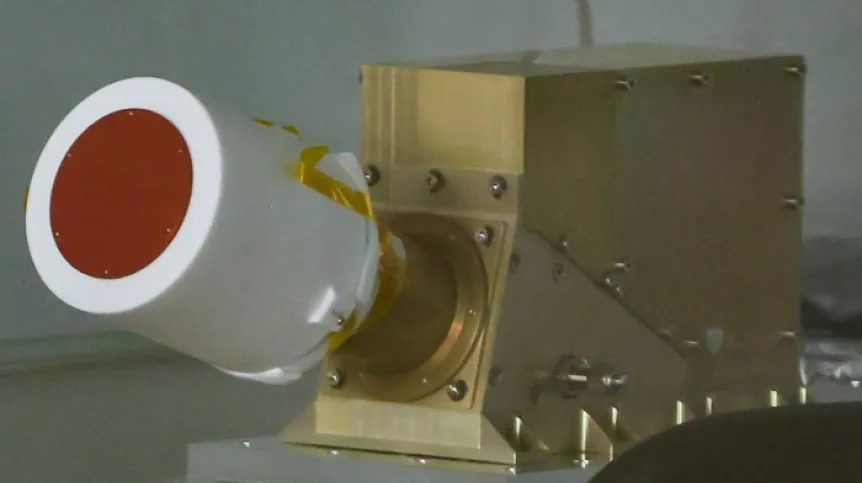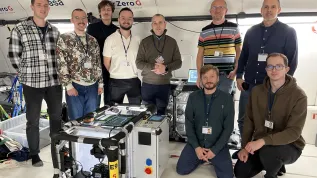
The Polish-built GLOWS instrument, the first entirely Polish device to take part in a NASA mission, has successfully made contact with Earth one week after launch.
“GLOWS is alive and has called home,” said Dr. Maciej Bzowski, head of the GLOWS experiment and project leader at the Space Research Centre of the Polish Academy of Sciences (PAS).
The photometer, designed and constructed at the Space Research Centre PAS, is part of NASA’s Interstellar Mapping and Acceleration Probe (IMAP) mission, which will study how solar wind interacts with interstellar space.
Chief engineer Dr. Roman Wawrzaszek said the instrument was successfully activated on October 1 around 6:00 p.m. CET. “The activation of the Polish instrument proceeded as planned. GLOWS has established communication with the satellite’s onboard systems and is transmitting data confirming its proper operation,” the Centre said in a press release.
The IMAP probe, launched on September 24 from the Kennedy Space Center in Florida aboard a Falcon 9 rocket, is on its way to the L1 Lagrange point, about 1.5 million kilometres from Earth. It has already travelled more than 700,000 kilometres, Wawrzaszek confirmed.
According to Ewelina Zambrzycka-Kościelnicka, spokesperson for the Space Research Centre PAS, the activation was an initial test. “Full commissioning is scheduled for the end of November, when IMAP reaches the L1 point,” she said.
NASA’s IMAP mission aims to study two major heliospheric phenomena: the acceleration of energetic particles and the interaction between the solar wind and the local interstellar medium. The heliosphere — a vast “bubble” of charged particles and magnetic fields created by the Sun — shields the Solar System from galactic radiation.
The spacecraft carries 10 scientific instruments, including Poland’s GLOWS (GLObal solar Wind Structure). GLOWS will observe the solar afterglow in the far ultraviolet by detecting Lyman-alpha photons at a wavelength of 121.5 nanometers — light that cannot reach Earth’s surface because it is absorbed by the atmosphere.
These observations will help scientists understand the global structure of the solar wind and its effects on space weather, which can disrupt satellites and spacecraft operations.
The Polish Ministry of Science and Higher Education funded the GLOWS project with more than PLN 20.8 million for 2021–2027.
The IMAP mission is led by Professor David J. McComas of Princeton University and coordinated by the Johns Hopkins University Applied Physics Laboratory (APL) under NASA’s Heliophysics Division.
The successful activation marks a significant step for Poland’s participation in international space research. “It’s the first time a fully Polish scientific instrument has flown as part of a NASA mission,” said Bzowski. “And it’s working exactly as expected.”
(PAP)
abu/ zan/
tr. RL













